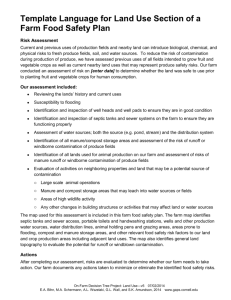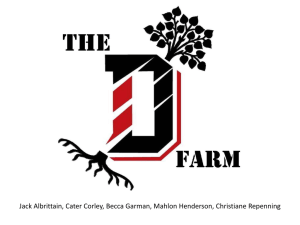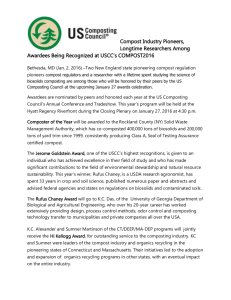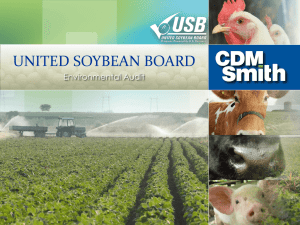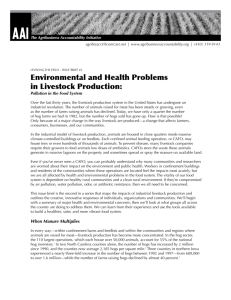Word Document
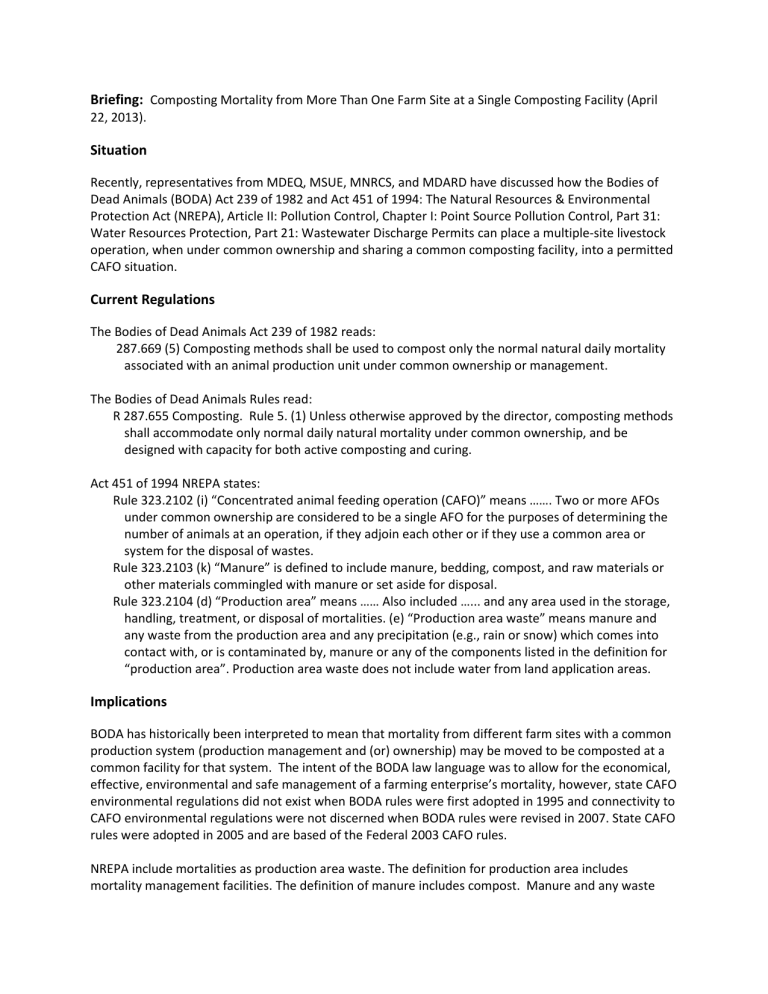
Briefing:
Composting Mortality from More Than One Farm Site at a Single Composting Facility (April
22, 2013).
Situation
Recently, representatives from MDEQ, MSUE, MNRCS, and MDARD have discussed how the Bodies of
Dead Animals (BODA) Act 239 of 1982 and Act 451 of 1994: The Natural Resources & Environmental
Protection Act (NREPA), Article II: Pollution Control, Chapter I: Point Source Pollution Control, Part 31:
Water Resources Protection, Part 21: Wastewater Discharge Permits can place a multiple-site livestock operation, when under common ownership and sharing a common composting facility, into a permitted
CAFO situation.
Current Regulations
The Bodies of Dead Animals Act 239 of 1982 reads:
287.669 (5) Composting methods shall be used to compost only the normal natural daily mortality associated with an animal production unit under common ownership or management.
The Bodies of Dead Animals Rules read:
R 287.655 Composting. Rule 5. (1) Unless otherwise approved by the director, composting methods shall accommodate only normal daily natural mortality under common ownership, and be designed with capacity for both active composting and curing.
Act 451 of 1994 NREPA states:
Rule 323.2102 (i) “Concentrated animal feeding operation (CAFO)” means ……. Two or more AFOs under common ownership are considered to be a single AFO for the purposes of determining the number of animals at an operation, if they adjoin each other or if they use a common area or system for the disposal of wastes.
Rule 323.2103 (k) “Manure” is defined to include manure, bedding, compost, and raw materials or other materials commingled with manure or set aside for disposal.
Rule 323.2104 (d) “Production area” means …… Also included …... and any area used in the storage, handling, treatment, or disposal of mortalities. (e) “Production area waste” means manure and any waste from the production area and any precipitation (e.g., rain or snow) which comes into contact with, or is contaminated by, manure or any of the components listed in the definition for
“production area”. Production area waste does not include water from land application areas.
Implications
BODA has historically been interpreted to mean that mortality from different farm sites with a common production system (production management and (or) ownership) may be moved to be composted at a common facility for that system. The intent of the BODA law language was to allow for the economical, effective, environmental and safe management of a farming enterprise’s mortality, however, state CAFO environmental regulations did not exist when BODA rules were first adopted in 1995 and connectivity to
CAFO environmental regulations were not discerned when BODA rules were revised in 2007. State CAFO rules were adopted in 2005 and are based of the Federal 2003 CAFO rules.
NREPA include mortalities as production area waste. The definition for production area includes mortality management facilities. The definition of manure includes compost. Manure and any waste
from the production area (which would include mortalities) are defined as production area waste.
Therefore, mortalities are production area waste. Two or more AFOs under common ownership are considered combined for purposes of determining number of animals if they use a common area or system for the disposal of wastes. Therefore, combining mortalities (production area waste) for storage, treatment, handling or disposal would combine AFOs into one CAFO that is under common ownership.
Case Example
Michigan Example Poultry Operation has four farm sites. The farm owner takes their dead birds from all farms and puts them into an In-vessel mortality composting unit at one of the sites. Alone, this individual farm site is not a large CAFO and it has its own land base for spreading all its production area waste (manure and all mortality compost). However, since dead birds are co-mingled from all four farm sites, the animal numbers are combined and in this case do constitute a large CAFO, as outlined in
NREPA. This would require the entire operation (land base) of all four farm sites to apply for a CAFO
NPDES permit.

